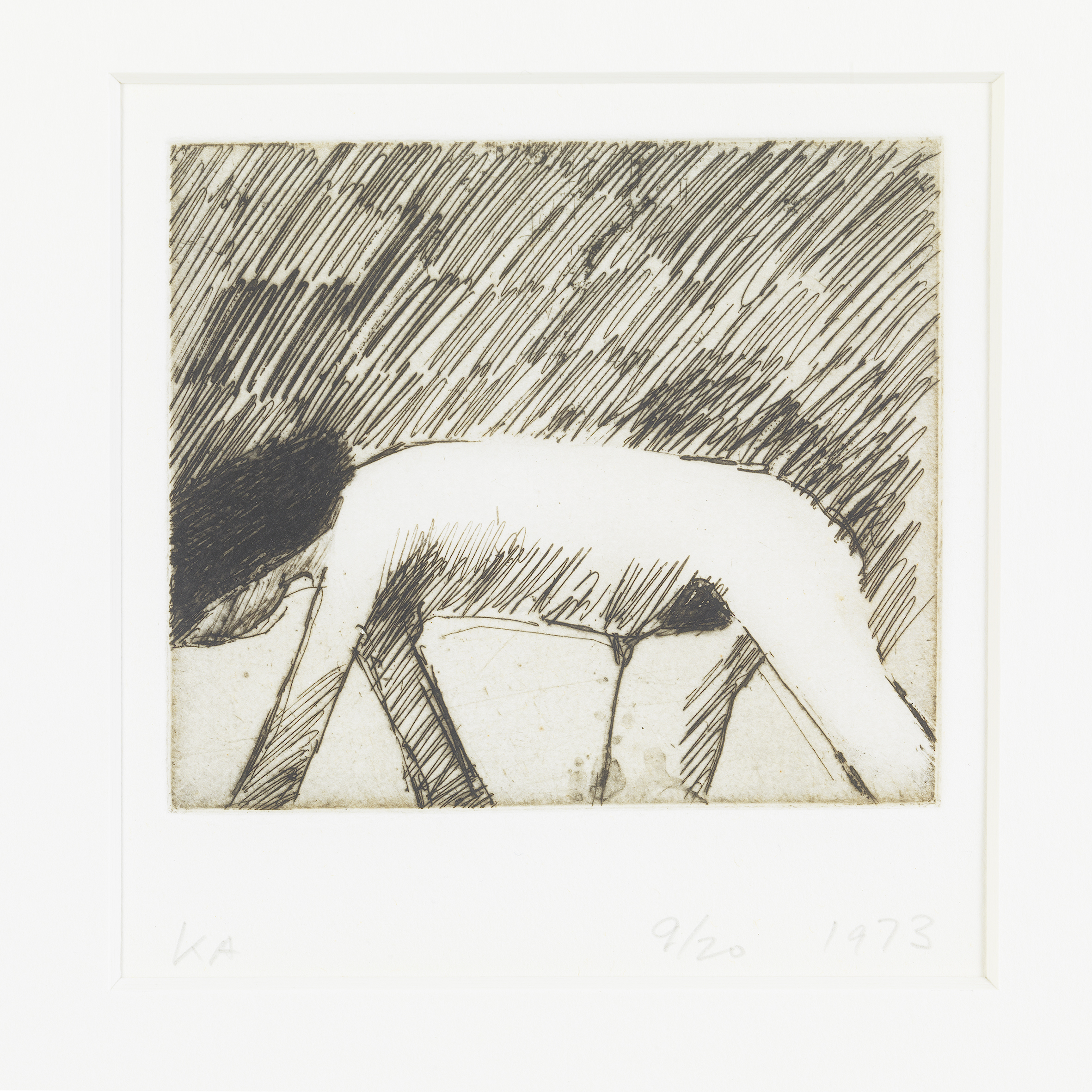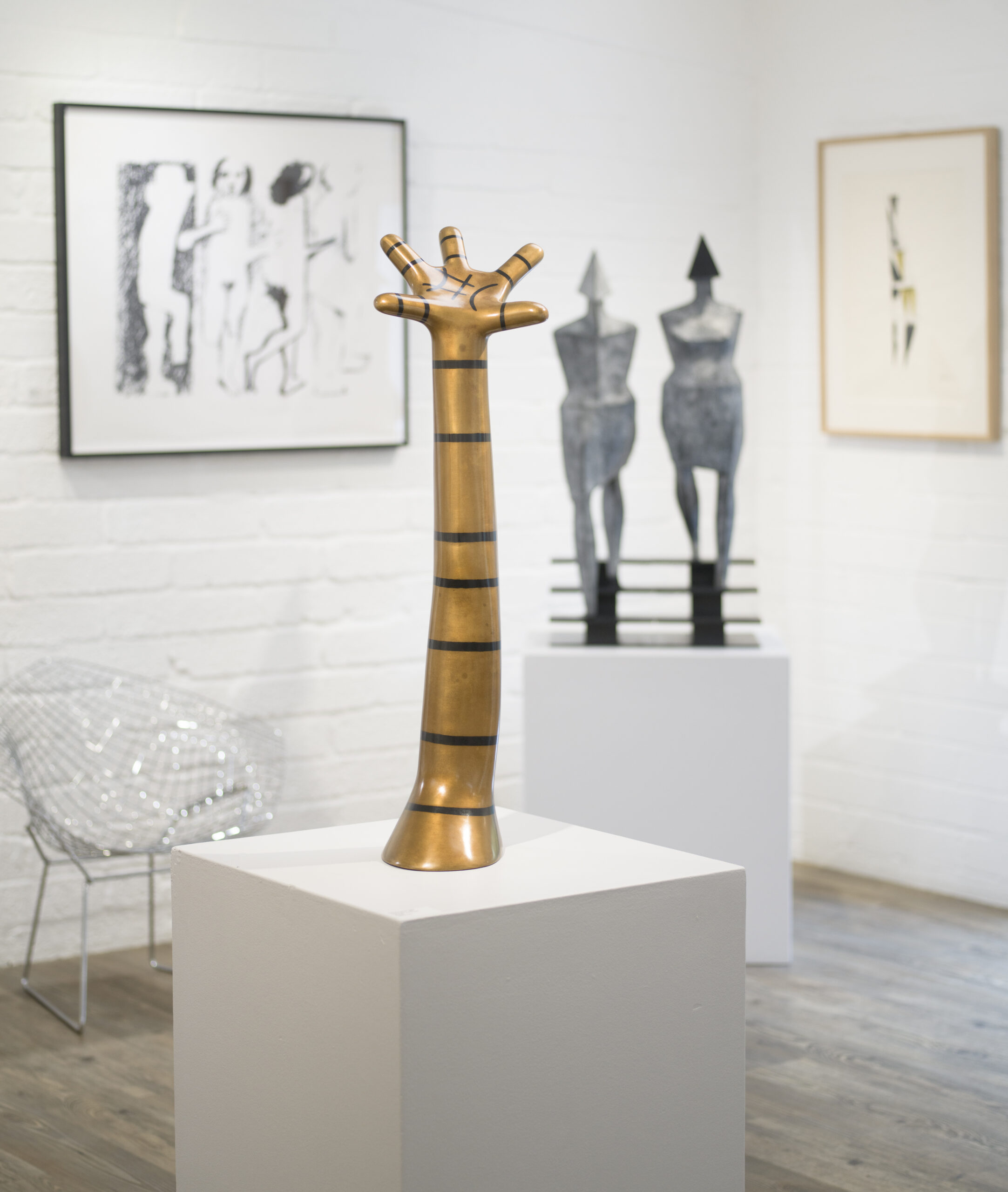Kenneth Armitage
Kenneth Armitage (1916 – 2002) is one of the most highly regarded British sculptors of the twentieth century. Born in Leeds, he won a scholarship to study at the Leeds College of Art in 1934, before continuing his studies at the Slade School of Fine Art in 1937. Armitage then completed army service before becoming head of the sculpture department at the Bath Academy of Art, Corsham in 1946. In 1953, Armitage became the first Gregory Fellow at the University of Leeds and he would be visiting professor at University of Caracas, Venezuala; Boston University, USA; and the Royal College of Art during his career.
Armitage achieved international prominence at the 1952 Venice Biennale, where he showed in the British Pavilion alongside Reg Butler, Lynn Chadwick and Bernard Meadows, among others. Herbert Read would describe this group as ‘the geometry of fear’, whose work was characterised by spiky, twisted, tortured figures that emerged from the iconography of despair and defiance in the postwar period.
Throughout his career, Armitage’s own sense of his work was that he is fundamentally a sculptor of the human body. His work is often imbued with a wry sense of humour: playful figures and planar elements always show the human presence. At a time when many of his contemporaries looked to the possibilities of new materials, such as welded steel or found objects, Armitage remained a stalwart of bronze. Indeed, it was the dynamic subjects produced in this material that established him as a sculptor of international reputation.
Kenneth Armitage has exhibited internationally since the 1950’s, including Yorkshire Sculpture Park, 1996; Museum of Modern Art, Japan, 1962; and an early career retrospective at the Whitechapel Gallery, 1959. He is represented in major international public and private collections, including Nationalgalerie, Berlin; Peggy Guggenheim Museum, Venice; Hakone Open Air Sculpture Museum; Kröller-Muller, Otterlo; Tate, London; Hirschhorn Sculpture Garden, Washington D.C. and Museum of Modern Art, New York City. In 1969 he was awarded a CBE, and in 1995 was elected a Royal Academician.




